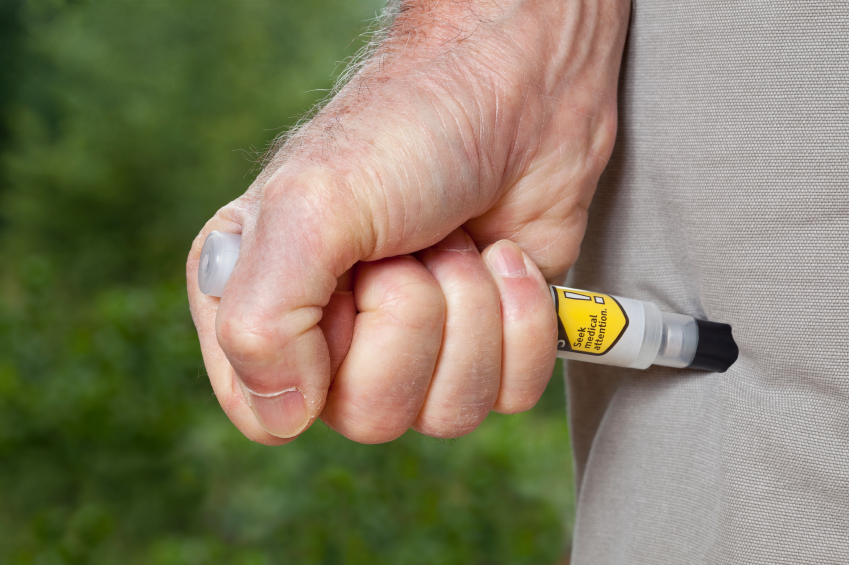In yesterday’s Advisor, we began a brief training session on how to handle life-threatening reactions. Today, we conclude the training session with how to recognize anaphylactic symptoms and how to treat anaphylaxis.
 |
To recap: One in five Americans is allergic to something—a food product, drug, chemical, insect bite, or plant pollen. Allergies occur when our bodies overreact to proteins in our environment. Symptoms range from runny noses to life-threatening reactions involving the heart and lungs. These life-threatening allergic reactions are called “anaphylaxis.”
Recognizing Anaphylaxis
One of the most dangerous things about an anaphylactic reaction is that victims may not know they have this kind of allergy until they suffer a life-threatening reaction. In fact, they may not have had a previous problem with the allergen.
People who have never been allergic to shellfish can suddenly begin reacting to it in adulthood; nurses who have worked in patient care for decades might develop life-threatening allergies to latex after years of exposure. So it’s important to recognize the symptoms of anaphylaxis and react, even if you’re not sure what’s causing the reaction.
Now it’s even easier to deliver safety training meetings with BLR’s new and improved Safety Training Presentations, including audio presentations – plug ‘n play…everything is done for you! Click here for more information!
An allergy may cause a localized reaction (for example, swelling at the site of a sting), but anaphylaxis is a systemic reaction and affects multiple areas of the body. Symptoms of anaphylaxis include:
- Sudden hives in different places on the body;
- Wheezing, hoarseness, or difficulty breathing or speaking;
- Itchy skin or eyes;
- Skin rash;
- Swelling of the lips, tongue, or face;
- Dizziness;
- Abdominal pain or cramping, nausea, vomiting, or diarrhea;
- Confusion, light-headedness, or fainting; and
- Racing pulse or palpitations (a sensation of being able to feel your heartbeat).
In as many as 90 percent of cases, hives or skin rash and swelling in and around the mouth are present. These two symptoms, plus either respiratory difficulties or blood pressure problems (light-headedness, dizziness, fainting), are considered sure signs of anaphylaxis. But don’t hesitate: If you see more than one of the symptoms above and think a person might be experiencing anaphylaxis, treat for anaphylaxis.
Anaphylaxis can reoccur anywhere from 1 to 72 hours after it initially occurs, even without further exposure to the allergen. For this reason, most people who know they have an anaphylactic allergy carry two doses of epinephrine.
Treating Anaphylaxis
If you suspect someone is suffering anaphylaxis:
1. Use the EpiPen (as demonstrated in the video included in this training). You cannot hurt someone—even a person who is not, in fact, suffering anaphylaxis by giving them a standard dose of epinephrine.
2. Call 911. Because the reaction may become worse or reoccur, it’s vital to call 911 and get medical assistance.
Safety Training Presentations in PowerPoint- everything is done for you! Easy to customize safety PowerPoints – change the meeting outlines and visuals to meet your own company’s policies and equipment. Click here to learn more!
Because the substances that can cause anaphylaxis are so common, it’s important to recognize this life-threatening condition. When you know how to recognize and respond to the symptoms of anaphylaxis, you may be able to save the life of a coworker, customer, client, or even a family member.
